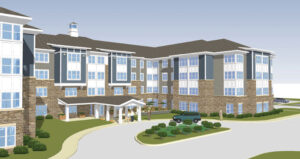An uptake in activity could be on the horizon for the skilled nursing and seniors housing market after the sectors enjoyed positive signs of recovery during the third quarter, according to an investment firm.
“The near-term future is opaque with the pandemic still creating uncertainty; however, seniors housing and skilled nursing facilities remain a key piece of the care spectrum, and the current environment may present unique favorable circumstances for investors,” wrote authors of a new report issued by Marcus & Millichap.
The analysis notes that average rents are up by more than 1% in all four levels of care across the seniors housing sector. Skilled nursing occupancy entered November at 76.2% and has steadily increased by 250 basis points over the last two quarters.
The recent success presents a “window of opportunity” for investors following the signs of recovery, move-ins rising and increasing vaccinations across the industries. Additionally, population trends indicate that “robust demand” is on the horizon.
“Many investors that moved to the sidelines during the pandemic have cash built up and are reentering the marketplace. Sales volume has already matched the 2020 total through the first three quarters of 2021, and momentum will likely continue in the coming months,” research analysis Benjamin Kunde wrote.
“Stimulus funds, which were especially generous in the skilled nursing segment, are starting to dry up, possibly persuading more owners to list their properties. Additionally, the cost of capital remains low, and potential interest rate hikes and tax changes on the horizon could drive sales activity in the near term,” he added.
However, labor shortages being experienced by both sectors could keep investors cautious about any deals, he warned.
“Many operators are utilizing higher compensation to attract staff, which is costly at a time when insurance fees have increased and infrastructure improvements are needed for virus containment. Furthermore, some operators are allocating funds to ramp up marketing efforts, as many facilities are trying to fill rooms at the same time,” Kunde wrote. “Endeavors to entice prospective residents are especially important in the near term, as move-ins should accelerate once a broader return to workplaces reduces the number of people able to provide at-home care.”





